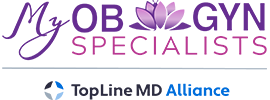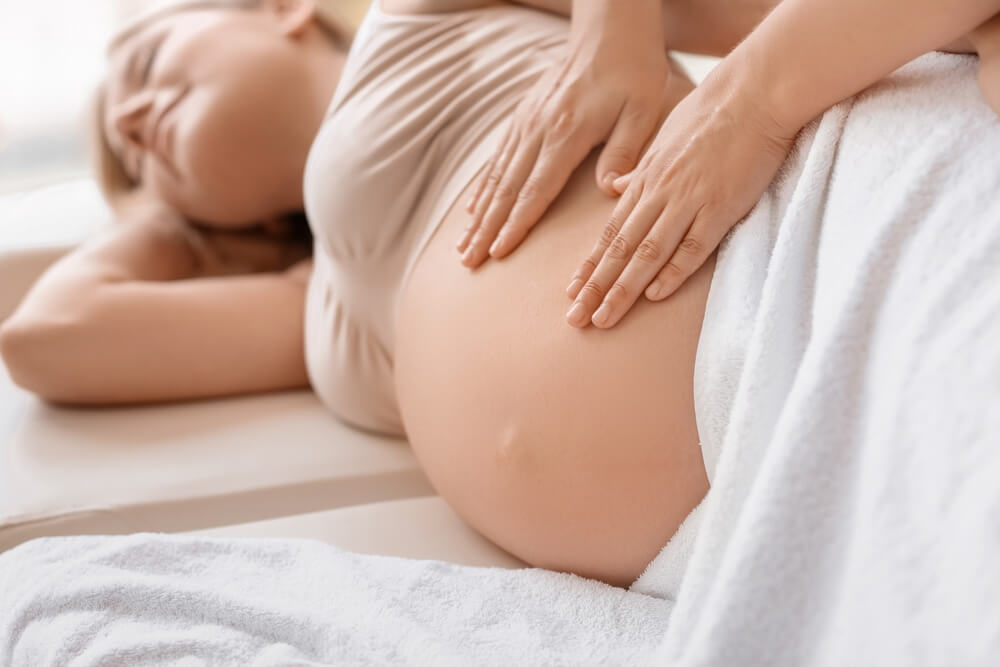If you’ve had a massage before, then you know that it’s refreshing both for your mind and your body. And getting a prenatal massage is no exception in that regard. Still, many expecting women might have concerns about getting a massage during pregnancy.
Can a pregnant woman get a massage? In this article, the expert team at My OBGYN Specialists gives you all the answers.
About Prenatal Massages
Essentially, prenatal massage is a massage technique adapted to the changes women undergo during pregnancy. When getting a traditional massage, you might have to spend half of the session lying on your stomach, face-down, and the other half facing up. Both of these positions can lead to discomfort and other problems.
During prenatal massage sessions, massage therapists will accommodate body and posture changes with specialized cushioning systems and holes that allow pregnant women to lie face-down without any problems. Or, pregnant women may lie on their sides during these sessions with the help of special support cushions and pillows.

Busting the Myth: Can Pregnant Women Get Massages?
For the most part, prenatal massages are safe starting from the second trimester, provided you receive approval from your healthcare practitioner and inform your massage therapist about your pregnancy. However, it’s best to avoid massages during your pregnancy’s initial three months because it can potentially cause you to become dizzy and worsen morning sickness.
Contrary to some myths, there is no “magic eject button” that can accidentally disrupt your pregnancy. Furthermore, there is limited scientific evidence supporting the specific effects of massage on pregnancy. Some massage therapists may avoid particular pressure points, like the one between the anklebone and heel, due to concerns about triggering contractions. However, the evidence regarding whether massages can induce labor is inconclusive or non-existent.
Still, it’s wise not to get your tummy tampered with because the pressure around that area can make you feel uncomfortable.
Also, lying on your back during prenatal massage sessions after the fourth month of your pregnancy is not recommended. The baby’s weight can compress some blood vessels, which might reduce blood flow to your placenta, leading to severe problems.
Trained and experienced massage therapists will also avoid deep tissue work on the leg area during massage sessions while pregnant. Sure, applying gentle pressure is okay, but pregnant women are at a higher risk of developing blood clots that can dislodge themselves with deep massage work. As such, deep tissue work can be risky and should be performed with extra caution.
Also, it’s essential to consider the qualifications of a massage therapist when seeking prenatal massage. While any massage therapist can massage pregnant women, visiting a specialist with a minimum of 16 hours of advanced training in maternal massage is preferable. Since there isn’t a specific certification, be sure to inquire about their expertise when making your appointment. By doing so, you can have peace of mind knowing you’re under the care of someone who understands how to alleviate pain and pressure related to your changing body during pregnancy.
Additionally, before scheduling a prenatal massage, always consult your healthcare practitioner, especially if you have preeclampsia, hypertension, diabetes, morning sickness, pressure, fever, abdominal pain, bleeding, a contagious virus, or abdominal pain. These complications could make prenatal massage risky, and your practitioner’s approval is vital for ensuring your safety and well-being.
The Benefits of Prenatal Massage
Science has shown that massages are capable of reducing stress hormones and loosening tense muscles. Massages are also capable of improving blood flow, which is a crucial benefit, especially when you’re pregnant. Also, it’s able to reconnect the mind with the body.
On the other hand, regular massage sessions during pregnancy can make you feel relaxed, and they may also help you with the following:
- Relieving joint pain
- Easing back and neck pain
- Relieve leg cramping
- Helping with carpal tunnel pain
- Easing sciatica
- Helping with insomnia
- Reducing swollen feet and hands
- Helping with headaches and sinus congestion

Prenatal Massage At Home: Is It Possible?
Your partner may also give you a prenatal massage at home. Only ensure that you are following the tips below:
Being Gentle With the Foot Rub
To achieve smoother strokes, your partner can begin by applying lotion and gently massaging the top of the foot with light pressure, moving from the toes towards the ankle while making small circular motions around the ankle area. Next, using both thumbs, they can create small circles on the sole of the foot just below the toes. For the heel, they can alternate between moving one thumb down as the other moves up, ensuring a continuous rhythm.
To further relax, they can gently tug on each toe and use their index finger or thumb to rub between the toes. They should avoid applying pressure on the area between the ankle and heel to be safe.
Avoid The Belly
Your partner shouldn’t massage your belly. Instead, they can gently rub it with oil enhanced with vitamin E to achieve a soothing effect and potentially help prevent unwanted stretch marks.
Back Rubs
Whether lying on your side or sitting, ask your partner to use both hands with lotion to stroke up and down your back, ensuring a smooth glide. They should concentrate on the muscles on each side of your spine. To further relieve tension, they can transition to working the muscles using their thumbs or the base of their hand, gently moving down and up your back.
Scalp Massage and Shoulder Rubs
Using the base of the hand or the pads of the fingertips, gently apply pressure to one side of the neck and glide between the top of the shoulder and the base of the skull. Repeat this on the opposite side for a soothing effect.
Next, indulge in a scalp massage. Start at the base of the skull and move towards the hairline, using both hands and spreading your fingers to apply gentle pressure to the scalp. You can circle your hands together or apart to enhance the experience. Additionally, adding gentle stroking to the face can provide an incredibly relaxing sensation.
Still, if you or your partner have any concerns regarding giving a prenatal massage at home, it’s always better to ask for the services of a professional massage therapist for peace of mind.
More Helpful Tips at Your Fingertips
In conclusion, prenatal massage can be a beneficial and safe way to promote relaxation, alleviate discomfort, and support the well-being of expectant mothers. With the guidance of a trained and experienced prenatal massage therapist, this specialized form of bodywork can address pregnancy’s unique needs and challenges. By focusing on reducing muscle tension, improving circulation, and easing stress, prenatal massage offers a valuable means of enhancing the overall prenatal experience.
However, pregnant individuals must consult with their healthcare provider before engaging in prenatal massage to ensure its suitability for their specific pregnancy and health condition. Embracing the nurturing and therapeutic benefits of prenatal massage can contribute to a more comfortable and enjoyable pregnancy journey for both the mother and her growing baby.
On that note, if you want to learn more about prenatal massages, feel free to contact us at any time.


